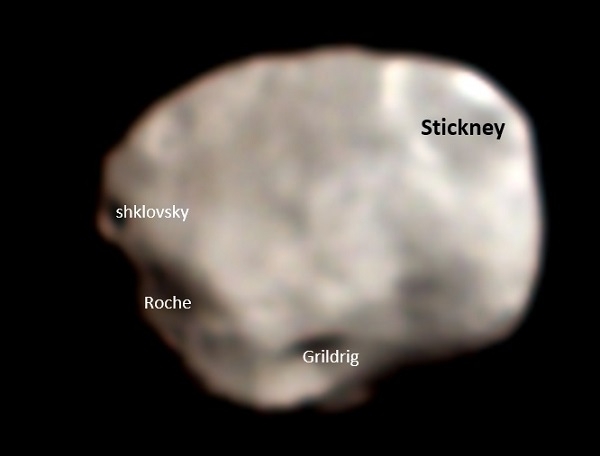ISRO's MOM Captures Image of 'Phobos' - Biggest moon on Red Planet
Total Views |
Bengaluru, July 04: In a major development, the Indian Space Research Organisation (ISRO) sharing the images of Phobos stated that the India Space Organisation's Mars Orbiter Mission (MOM) has managed to capture a picture of Mars' biggest moon Phobos with the Mars Colour Camera (MCC).

The image was taken on July 1, when MOM was about 7,200 km from Mars and at 4,200 km from Phobos. The Spatial resolution of the image is 210 m and the composite image generated from 6 MCC frames and has been color corrected.
A recent image of the mysterious moon of Mars, Phobos, as captured by India's Mars Orbiter Mission
— ISRO (@isro) July 3, 2020
For more details visit https://t.co/oFMxLxdign@MarsOrbiter #ISRO pic.twitter.com/5IJuSDBggx
As per ISRO, the picture makes it evident that Phobos is not strictly spherical and that is because the Martian moon has encountered a violent phase in the past wherein a large section was lost during a collision. The image also highlights some of the largest craters on Phobos -- Stickney crater, Shklovsky, Roche, and Grildrig craters.
Grildrig is the largest of the three with a width of 2.6 kilometers. Roche is around 2.3 kilometers in diameter. Shklovsky is slightly smaller, estimated to be 2 kilometers wide.
What is MCC?
The Mars Color Camera (MCC) onboard MOM has 16 different modes of exposures, aimed at imaging the Mars surface for Morphological / Structural mapping, imaging dynamic events viz. Polar Icecap, clouds, Dust storms, and other opportunistic imaging.
What is Phobos?
Mars has two moons, Phobos and Deimos, which are thought to be captured asteroids. Phobos is the larger and closer of the two natural satellites of Mars. Phobos is largely believed to be made up of carbonaceous chondrites. The violent phase that Phobos has encountered is seen in the large section gouged out from a past collision (Stickney crater) and bouncing ejecta.
Phobos may be Mars' biggest Moon but in comparison to Earth’s Moon, it’s pretty small with a radius of only 11 kilometers. Even so, it's seven times bigger than Mars’ other moon, Deimos. It is so close that it orbits Mars faster than Mars rotates, and completes an orbit in just 7 hours and 39 minutes. Phobos is drawing closer to Mars by one meter every century, and it is predicted that in 50 million years it will collide with the planet or break up into a planetary ring.
Phobos is one of the least reflective bodies in the Solar System and features a large impact crater, Stickney. The temperatures range from about −4 °C (25 °F) to −112 °C (−170 °F), on the sunlit and shadowed sides respectively.
Mars Orbiter Mission has been successfully going around the red planet since September 24, 2014, in an elliptical orbit, It has 5 and a half year since its launch. ISRO had launched the spacecraft on its nine-month-long odyssey on a homegrown PSLV rocket from Sriharikota in Andhra Pradesh on November 5, 2013.
The Rs 450-crore MOM mission aims at studying the Martian surface and mineral composition as well as scan its atmosphere for methane (an indicator of life on Mars).
Earlier, ISRO acquired the patent to the extraordinary process of manufacturing artificial Moon Soil on Earth. ISRO believes that recreating Lunar soil on Earth will allow it to study the mobility and capabilities of lunar rovers, this research will also help ISRO to anticipate the Moon’s surface before sending more rovers to the moon.

